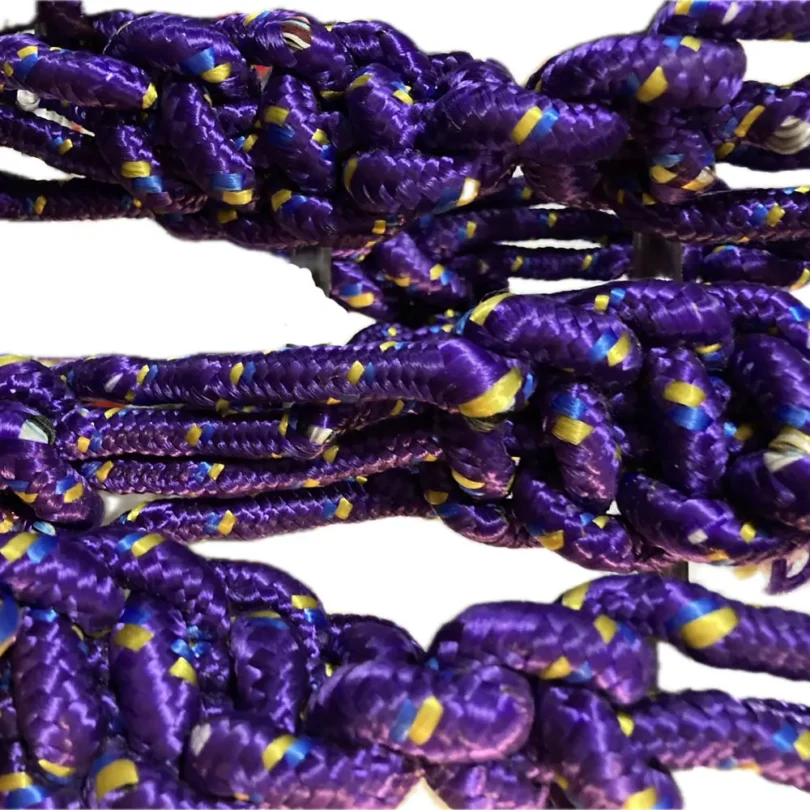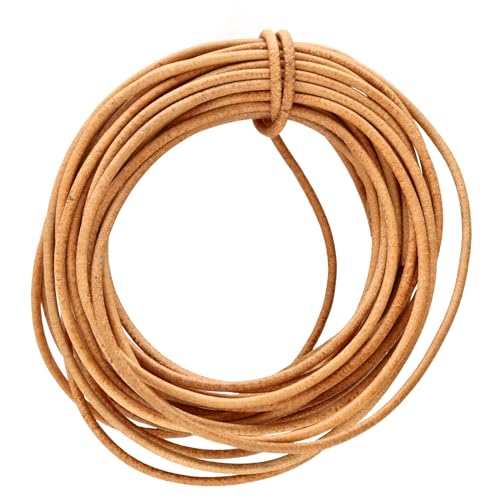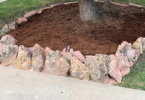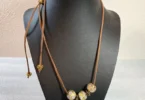The simple Square Knot and the related Surgeon’s Knot are great to learn for your beading projects and more.
This is another in our series of Best Knots for Beading: the knots described here are used when you need a more secure knot to connect beading threads together.
How to Tie a Square Knot
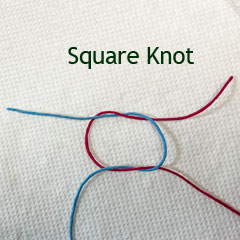
This image shows the cord position necessary for forming a Square knot. It’s important to pay attention to how the cord is layered on each side of the knot. Switching the layers will result in what gets called a “Granny Knot”.
This is a good knot to use when joining two pieces of cord together. It will hold well as long as the cord you are using is not too soft or slippery. For example this knot tends NOT to work very well with elastic cord. It works rather well with waxed cord.
This knot is used in decorative cording or macramé because the knot can be tied repeatedly to create a pattern. Beads can be strung onto the cord within or between knots to enhance the design.
How to Tie a Surgeon’s Knot
This is the cord position necessary for forming a Surgeon’s knot. Note that this is the same as the Square knot, but the end of the cord is passed through the loop one extra time on one side.
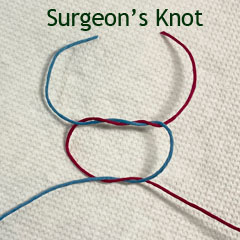
The Surgeon’s knot is used when you want a more secure knot than a Square knot. It tends to curl up a bit when tightened – it stays together better, similarly, it is a lot harder to get apart! This knot is often recommended by beaders that are making bracelets out of stretchy elastic stringing material.
When tying a cord in stretchy material, I like to add a dot of glue in the middle of the knot before pulling it tight. This practice will help stabilize the knot so that the bracelet will last longer. My favorite glue for this purpose is E6000 since it is clear and it won’t crystallize when dry.
When beading, I am always just using a small amount of E6000, so the small tubes of this adhesive are perfect. This will take you to a four-pak of small tubes. If you cap these up carefully, they can last a very long time.
Cord for Beading
The cord used in the pictures is a 1mm Hemp Cord and it is commonly used when tying knots for beading. I like it when I am working with glass beads because you often can just push the cord through the beads without using a needle.
Beading Tip: If the cord gets too soft to insert it into bead holes, or is catching on the interior of the bead holes, try coating the tip of the cord with glue (Elmer’s white glue or a Glue Stick works well). Let the glue dry, then cut the very end of the cord at an angle. You’ll usually find that stringing will go much more smoothly.
Thin Hemp cord comes in a great selection of colors. It is not quite as smooth as cotton or polyester cord, but sometimes that is exactly what is needed for certain projects or design criteria.
This set of hemp cord gives you 16 colors to choose from for beading projects or other knotting crafts.
Another 1mm Cord choice that I like for tying jewelry knots is Waxed Cotton or Polyester cord. It comes in a wide range of colors.
This set will get you started making knotted cord necklaces and bracelets in a wide variety of colors. The diameter of the cord is approximately 1mm.
When I have large hole beads, with hole openings of 2mm or larger, I love to use Greek Leather Cord for knotting. Thicker leather cords have a heavier, more dramatic look than thinner cords, yet retain suppleness and “drape”.
This leather cord is exactly what I am using in the tutorial pictures. It comes in Natural and Black (as I show) and about 20 other colors. This is the 1.5mm thickness and it comes in 5 meter lengths (about 16 feet). It is also available in full hanks (50 meters) if you plan on make LOTS of necklaces.
Frequently Asked Questions
What’s the best cord to use for knotted jewelry making?
Cord selection for jewelry depends on a number of factors: hole size of your beads, cord strength, how comfortable the cord is against your skin, stretchy vs. not stretchy, and what colors are available, to name a few.
Do I need any special tools for knotting?
Most knotted jewelry projects don’t need any tools, other than scissors or wire cutters to cut the cord.
Some more specialized types of knotting, such as pearl knotting where you tie a half hitch knot between every pearl (or gemstone bead) on a necklace, need knotting tweezers to be able to position the knot in the right location before tightening the knot. Loom work, a combination of beading, weaving and knotting can also require specialize tools (such as many forms of looms).
There are a lot of specialized tools available, but as I owned and managed an online jewelry supply business for years, I’d have to say that many of them didn’t provide much benefit (especially given the cost) over basic tools. Keep it simple.
How do I tie a secure and adjustable sliding knot?
There are a number of ways to create adjustable length necklace and bracelets. Since there are a number of factors to consider and sliding knots take a bit more explanation, I’ve created two tutorials with lots of close up pictures to help you learn to tie sliding knots and also to make adjustable length cord jewelry without having to tie a knot at all.
What knots are most used for macramé?
Macramé most often uses the Lark’s Head knot and Square Knots. Tying several ‘Granny Knots’ in a row, which are similar to square knots, will cause the row to spiral. Macramé also utilizes cords from adjacent knots to tie subsequent rows.
Can I use knotting for stretch cord jewelry?
Yes, usually the Surgeon’s knot is the best choice for finishing stretch cord jewelry. Since knots in stretchy material tend to loose or weaken, adding a somewhat flexible glue inside and around the knot will help keep the cord knotted. Some people also resort to tying multiple knots, depending on the type of stretch cord product that you are using.
How do I prevent fraying when trimming the ends?
Methods to prevent fraying depend on the type of cord being used. Polyester cord can be melted slightly using a butane lighter or a soldering iron. Twisted cord such as hemp can be secured with a drop of long lasting adhesive such as E6000. Real leather cord does not fray.
Another method is to just embrace the fraying process. Tie a half hitch knot near the end of your cord, then trim it a short distance away from the knot, allowing for a bit of fraying.
Other Knotting Resources
I hope you enjoyed this installment of Best Knots for Beading. You may also want to visit the Sliding Knot Tutorial if you have an interest in making Jewelry, especially adjustable length necklaces using cord. Another method for using large hole metal beads to form the sliding length adjustment for a necklace can be found in this detailed tutorial Adjustable Length Necklace – No Sliding Knot Required!
Also check out the Half Hitch Knot article to learn different ways of using another type of simple knot.


